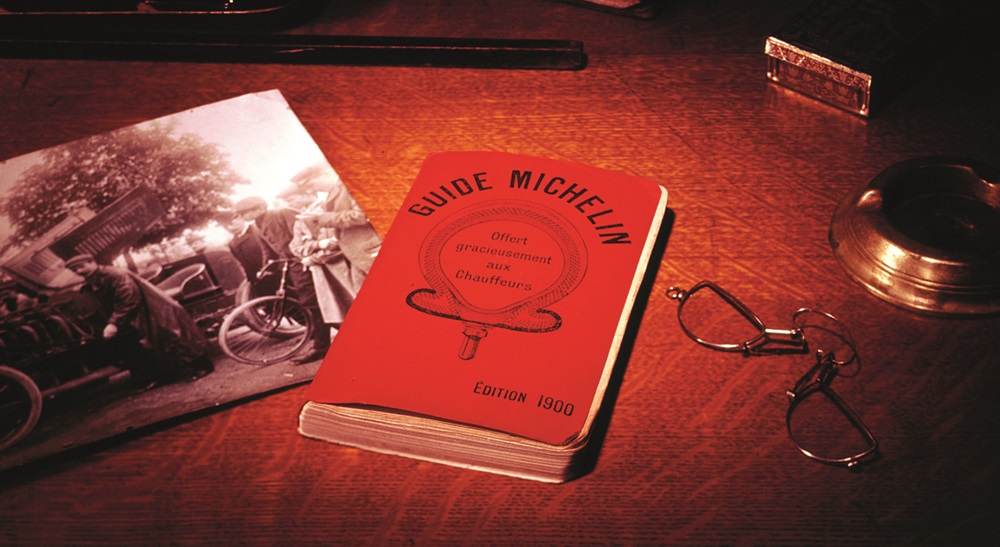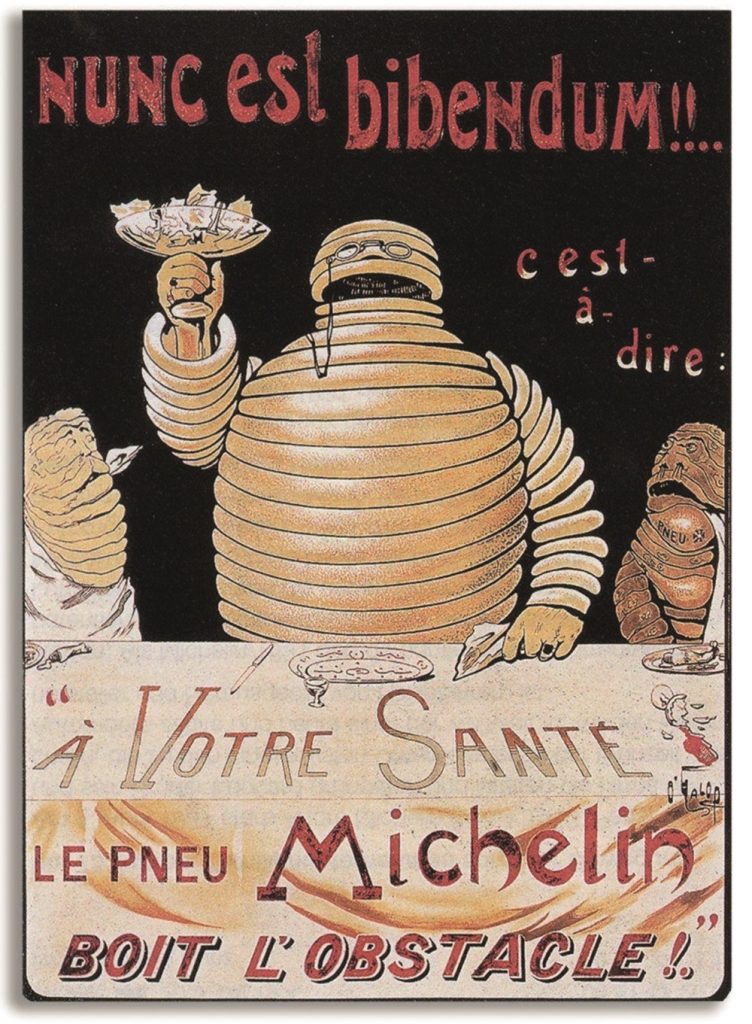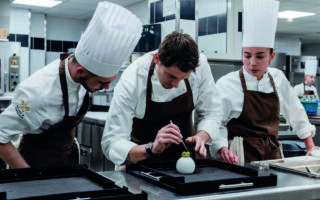
The History of the Michelin Guide
Peter Friend looks at the long and illustrious history of the famed Michelin Guide to restaurants…
As I gaze out across the river Thames from the glass-fronted restaurant in a quintessentially English village, the waitress appears with our starter. The beautifully presented creation from the kitchens at The Waterside Inn’ is nothing short of exquisite. Artistry on a plate.
First awarded three Michelin stars in 1985 (the only UK restaurant to have held such accolades for nearing 40 years) the Roux family’s restaurant epitomises French culinary flair… on the other side of the Channel.
As we pondered whether it was the faint taste of lemongrass that gave the starter its unique taste, we also pondered something even greater: how did a guide by a French tyre manufacturer come to represent the crème de la crème of culinary excellence?
To answer that question, we have to travel back to the 19th century when, in 1889, brothers André and Édouard Michelin formed – their tyre company in Clermont-Ferrand. At a time when there were only an estimated 3,000 cars on the roads of France, it was a bold and visionary move – not only did few people have cars but even fewer travelled very far in them.
The brothers also developed a little red booklet which contained information ranging from how to change a tyre to maps and places to stop for fuel. They believed that promoting the ease and enjoyment of motoring for tourism and not just for necessity would ultimately translate into more tyre sales.
For the first 20 years, the guide was free; however the brothers took another visionary decision to start charging for it. It was their belief that something with a value, would in turn be valued itself – it turned out they were right. It was not until the 1920s that the guide included a list of suggested places to dine and stay, initially focusing on Paris. Mystery diners, the forebears of today’s inspectors, were recruited, and by 1926 the first of the famed stars were awarded, with just one star rating. In 1931, the second and third stars were added, but it was another five years before the guide revealed the merits for each:
ONE STAR: high quality cooking, worth a stop.
TWO STARS: excellent cooking, worth a detour.
THREE STARS: exceptional cuisine, worth a special journey.
So what is it that sustains the Michelin Guide’s success 100 years on, in the face of huge competition from other guides and the drive towards all things digital? As well as its stellar reputation across the decades and the exacting standards it imposes on kitchens across the globe, the simplicity of its grading system may well be a significant factor.
Indeed, it’s within those descriptions that three words stand out, and take you right back to the core ethos of the original 1900s guide: stop, detour and journey.
At the same time as they were developing the Guide, the brothers gave life to the larger-than-life Bibendum – aka the Michelin Man – which has become the iconic logo for both the tyre company and the guide itself. Esteemed artists, including the likes of Salvador Dalí, have helped shape the character we know and love today. ‘Bib’, as he is often affectionately called, also gave his name to a new rating in 1997 when Michelin created the Bib Gourmand, the mark of a friendly restaurant which serves up good food at reasonable prices (and often seen as a sign that an establishment is heading towards its first Michelin star).

In 2016, Michelin (in perhaps a further attempt to broaden the appeal and increase purchases of their guides) introduced L’Assiette Michelin (the Michelin Plate) where inspectors found ‘good quality food’.
Whether a Bib Gourmand or L’Assiette is a stepping stone to the elusive stars, or a happy plateau for an establishment to attain depends largely on the ambitions of a particular restaurant. Understanding the process by which stars are awarded gives a greater insight when you look at the inspectors’ five key criteria:
- Quality of products
- Mastery of flavour and cooking techniques
- The personality of the chef represented in the dining experience
- Value for money
- Consistency between inspectors’ visits the dining experience
Considering there are an estimated 3,000 starred restaurants (in approximately 40 countries, as of 2022) it might come as a surprise that, whilst shrouded in mystery, there are only around 120 Michelin inspectors in operation. Each possesses six core values: anonymity, independence, expertise, reliability, passion and quality.
Even a quick calculation, given each restaurant will receive an annual visit, this translates to each inspector enjoying on average a Michelin-starred meal every two weeks (perhaps savouring an Assiette Michelin or Bib Gourmand restaurant on the days in between just to whet their appetite!).
The longevity and esteem of the Michelin Guide in an increasingly digital world, where Instagram and TikTok are king, serves to illustrate its relevance today. Whilst a sophisticated website now works hand in hand with the famed red-bound pages, it is the Guide itself which is almost as prestigious as the stars contained within.
Latest Posts:
- Canard au sang
- Oeufs en meurette
- Le Goûter: The Sweetest Part of the Day
- Fabien Ferré: Jumping from 0 to 3 Michelin Stars
- Sardines and onions summer tart
Lead photo credit : © MICHELIN.COM
Share to: Facebook Twitter LinkedIn Email
More in French food, Michelin, Michelin guide



